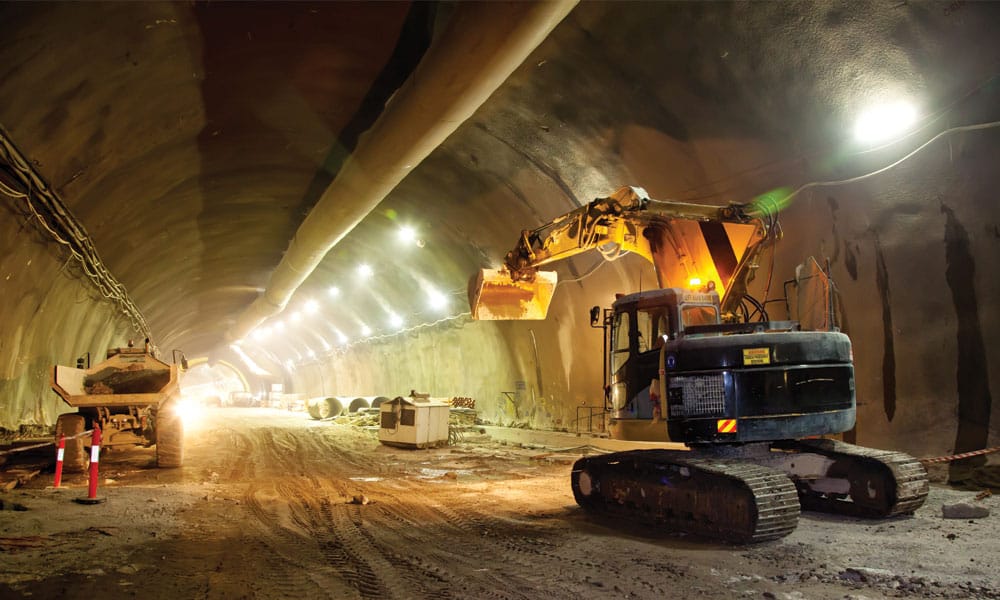Why Geotheta Sticks out in the Field of Geotechnical Engineering
Why Geotheta Sticks out in the Field of Geotechnical Engineering
Blog Article
Navigating Geotechnical Services: The Value of Geotechnical Reports, Soil Compaction Screening, and Sidewalk Layout in Ensuring Structural Honesty
Geotechnical services, incorporating the manufacturing of geotechnical reports, conducting soil compaction screening, and thorough pavement design, offer as the keystone of ensuring architectural integrity. geotheta. These vital parts not only lay the groundwork for effective task implementation yet additionally reduce prospective threats that might endanger the stability and resilience of a building and construction project.
Importance of Geotechnical Records
Geotechnical reports play an essential role in offering comprehensive insights right into the soil and rock conditions of a site, essential for ensuring the structural stability of construction jobs. These reports are an essential component of the initial website investigation procedure, using important details that affects the style, building methods, and overall feasibility of a project. By evaluating soil composition, stability, and prospective threats such as landslides or sinkholes, geotechnical reports allow engineers to make educated choices concerning foundation design and construction techniques.
Moreover, geotechnical records help in threat analysis and mitigation methods, assisting task stakeholders recognize the potential difficulties that might occur throughout construction. With extensive evaluation and analysis of geotechnical data, engineers can create options to resolve site-specific issues, guaranteeing the long-lasting stability and safety of the framework. Inevitably, the thorough nature of geotechnical records acts as an essential foundation for effective task planning and implementation, lessening risks and boosting overall job outcomes.

Role of Dirt Compaction Screening
Just how vital is the analysis of soil compaction with screening for making sure the stability and longevity of building projects? Soil compaction screening plays a crucial role in the building and construction industry by ensuring that the dirt under a framework is appropriately compacted to avoid and sustain the intended load negotiation (geotheta). Effectively compressed soil supplies a stable structure for buildings, roadways, and various other structures, minimizing the threat of architectural failure and pricey fixings in the future
Dirt compaction testing involves gauging the thickness of the dirt and comparing it to the maximum density attainable for that particular dirt type. This helps engineers establish if the dirt has been compacted completely to support the planned structure. By conducting soil compaction examinations during building and construction, designers can recognize any kind of areas that require extra compaction and take rehabilitative steps before waging more construction.
Significance of Pavement Design
Evaluating soil compaction via testing not only guarantees the stability and longevity of building projects yet additionally lays an essential structure for reliable sidewalk style. Pavement layout is a vital aspect of construction tasks as it directly affects the sturdiness and performance of roadways, car park lots, and various other structures subjected to car wikipedia reference or foot web traffic. Appropriate pavement layout thinks about aspects such as web traffic lots, environmental conditions, soil characteristics, and product buildings to produce a sustainable and robust surface area. By integrating data from dirt compaction examinations, designers can establish the proper thickness, products, and layering for the pavement to withstand anticipated tensions and keep architectural integrity in time. Additionally, sidewalk style influences drain patterns, surface area rubbing, and general safety for users. With meticulous preparation and analysis, geotechnical engineers can maximize pavement styles to meet particular project needs, guaranteeing smooth transport paths and minimizing upkeep costs in the future.
Making Certain Architectural Honesty
These records provide important details on dirt make-up, stability, and potential risks, aiding in notified decision-making throughout the layout and building and construction stages. Furthermore, conducting thorough soil compaction screening is vital to guarantee that the dirt under foundations or pavements is correctly compacted to support the intended loads and prevent settlement concerns.
Furthermore, carrying out robust pavement design methods is essential for ensuring the structural integrity of roads, parking whole lots, and other paved surfaces. Proper pavement layout takes into consideration aspects such as website traffic quantity, environmental problems, and dirt qualities to create risk-free and sturdy transport facilities. By sticking to anonymous these techniques and making use of geotechnical solutions properly, building and construction projects can enhance their structural integrity, minimize risks of failure, and make sure the lasting performance of the built environment.
Securing Versus Risks
In light of the important importance positioned on making certain architectural stability through careful focus to product selection and dirt screening, safeguarding versus dangers comes to be vital in keeping the security and longevity of construction projects. Risks in building and construction tasks can stem from different resources, consisting of natural calamities, dirt instability, or layout problems.
Furthermore, developing contingency strategies and carrying out robust monitoring systems can help minimize unforeseen dangers that may arise throughout building and construction. Regular assessments and high quality control steps must be accomplished to ensure that materials are made use of based on specifications which construction practices stick to market standards. By proactively recognizing and attending to potential risks, building tasks can improve their durability and minimize the probability of architectural failings, eventually ensuring the safety and security and longevity of the built atmosphere.
Final Thought

Soil compaction testing plays an important duty in the construction industry by making certain that the soil below a framework is properly compressed to prevent and support the intended load negotiation.Soil compaction testing includes determining the thickness of the soil and contrasting it to the optimum density achievable for that particular soil type (geotheta). By carrying out dirt compaction examinations throughout construction, check here designers can determine any areas that require added compaction and take corrective steps before continuing with more construction
Additionally, conducting comprehensive soil compaction screening is critical to guarantee that the soil underneath structures or pavements is appropriately compressed to support the intended loads and stop settlement problems.
In verdict, geotechnical records, dirt compaction screening, and sidewalk layout play essential functions in making sure the architectural honesty of building tasks.
Report this page